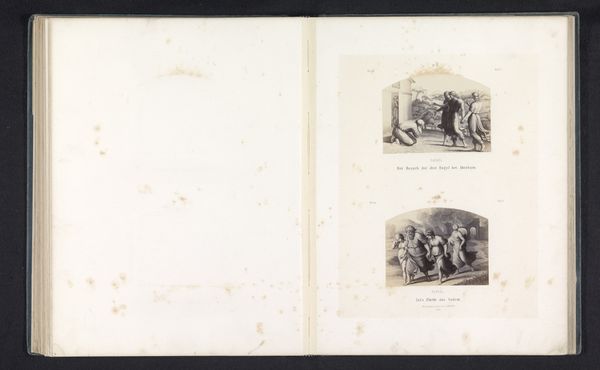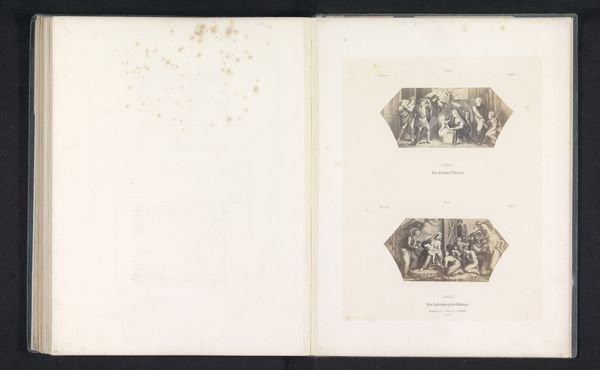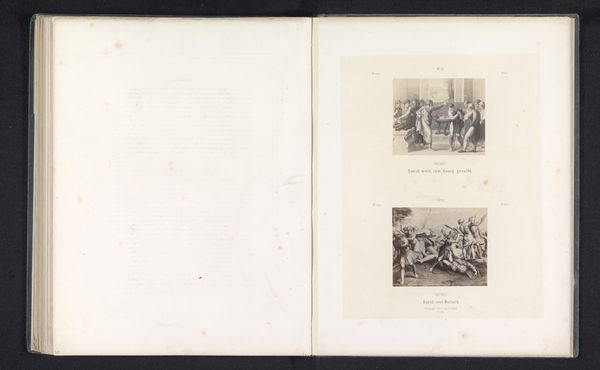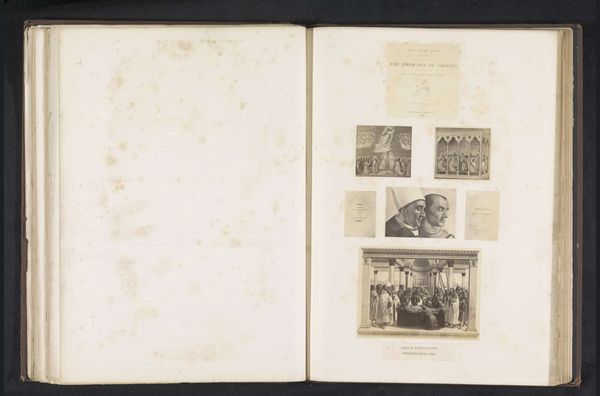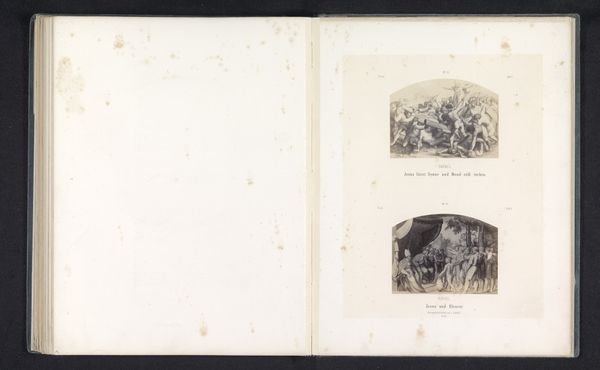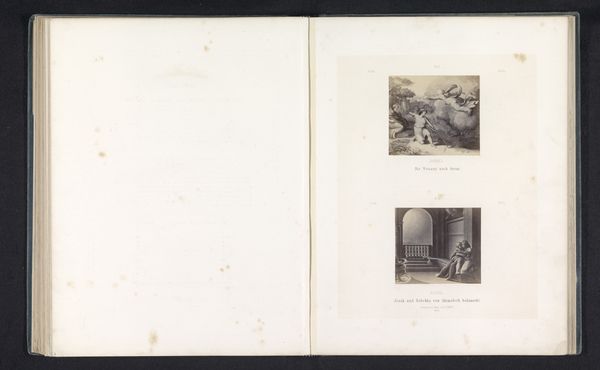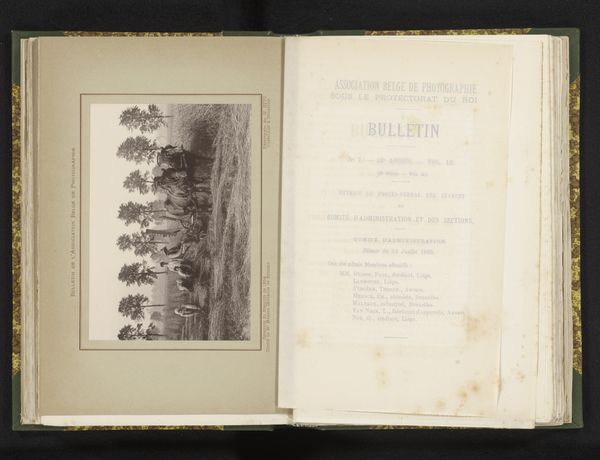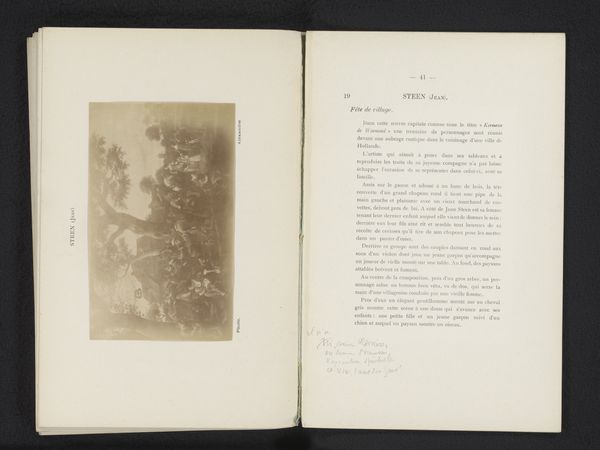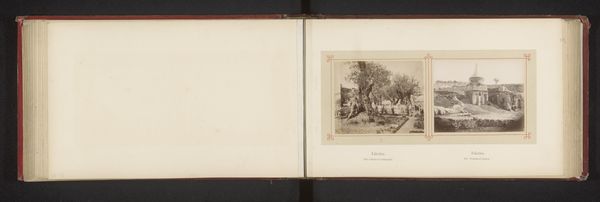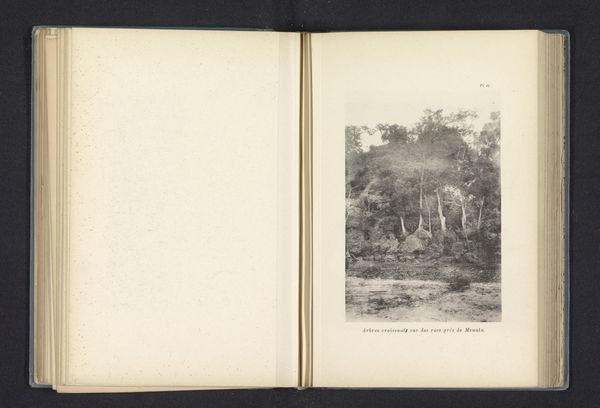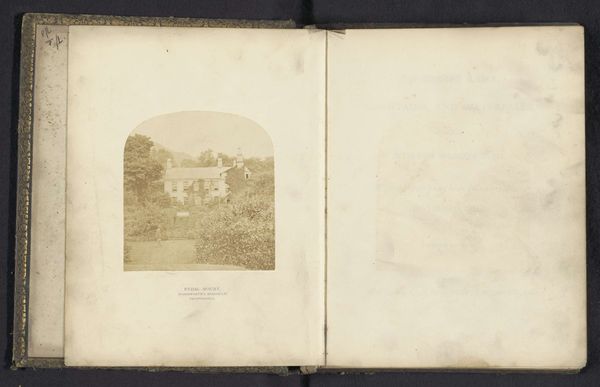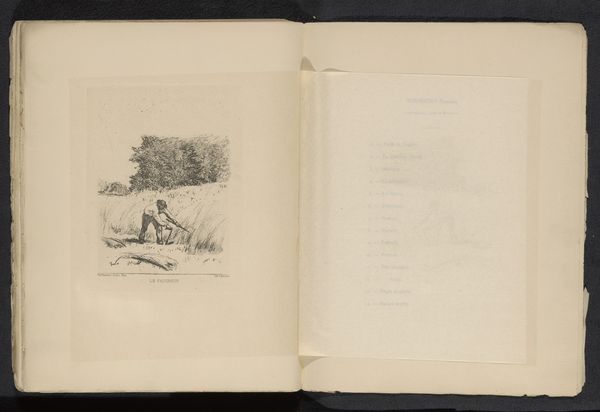
Fotoreproducties van prenten naar fresco's met voorstellingen van Jozua die door de Jordaan trekt en de val van Jericho door Rafaël voor de loggia's in het Vaticaan before 1861
0:00
0:00
print, fresco, engraving
#
narrative-art
# print
#
fresco
#
history-painting
#
italian-renaissance
#
engraving
Dimensions: height 325 mm, width 250 mm
Copyright: Rijks Museum: Open Domain
Curator: Well, isn't this just the quietest drama I've seen today? It’s like looking at whispered battle cries. Editor: Quiet perhaps, but far from devoid of historical noise. Here we have photographic reproductions of prints based on frescoes depicting Joshua’s crossing of the Jordan and the Fall of Jericho by Raphael, originally intended for the Vatican loggias. The print reproductions, attributed to Gustav Schauer, date from before 1861. What's your read on the impact these images would have had? Curator: Impact? Imagine, for a moment, the hushed reverence in the Vatican loggias, then consider the journey of these images from fresco to print to photographic reproduction—it’s like translating a poem, each iteration echoing with loss and altered meaning. Editor: The act of reproduction here becomes a key point, especially when thinking about religious and political power. The original frescoes served to visually assert papal authority. These accessible reproductions could disseminate a particular ideology. What’s fascinating is that printmaking and photography allowed these narratives to travel, but who was the intended audience here? Were these didactic images for mass consumption? Curator: That’s exactly what I find myself wondering: did these images embolden or just… decorate? I see little scenes teeming with people. Tiny lives marching under enormous stories. Is that hope or blind faith I wonder? It’s all there isn’t it. Editor: Blind faith often functions as a crucial tool for maintaining existing power structures, doesn’t it? It certainly adds layers to consider how these scenes portray conquest and divine mandate. Even through the lens of 19th-century reproduction techniques, such as these photographic print copies, the undercurrent of religious exceptionalism remains inescapable. Curator: Yes, the weight of expectation sits heavy even in this reproduction. Despite the conversion from the fresco, that captures all the Renaissance movement; all this still makes me reflect upon the layers we assign to history when, in truth, we simply replay these scenes with new actors on a slightly different stage. Editor: It makes you wonder what other stories are whispered behind the scenes of such grand narratives, and who are strategically written out of them to establish certain sociopolitical arrangements. Curator: Exactly. Now, I can't shake off this subtle melancholic atmosphere after considering this artwork… almost feels incomplete, right? Editor: Perhaps this incomplete feeling invites further questioning, particularly regarding the stories we continue to tell—and sell.
Comments
No comments
Be the first to comment and join the conversation on the ultimate creative platform.
